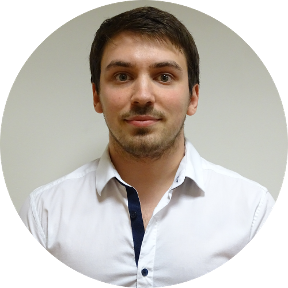Welcome to the Onshape forum! Ask questions and join in the discussions about everything Onshape.
First time visiting? Here are some places to start:- Looking for a certain topic? Check out the categories filter or use Search (upper right).
- Need support? Ask a question to our Community Support category.
- Please submit support tickets for bugs but you can request improvements in the Product Feedback category.
- Be respectful, on topic and if you see a problem, Flag it.
If you would like to contact our Community Manager personally, feel free to send a private message or an email.
Options
grid of points inside a body by FS
 otaolafr
Member Posts: 113 EDU
otaolafr
Member Posts: 113 EDU
I came to the forum looking for some help regarding a FS that I am trying to develop:
I would like to create a FS that creates a pseudo copy of a body but in a "lego-like form" (like a blockish version of it)
what I mean is to be able to recreate a body but with orthogonal blocs of the same size (a,b,c) one after each other.
for this, I thought about doing three loops for each ax (with a step of the size of the block in that direction)
and a conditional that if evaluateQuery(context, qContainsPoint(q, point)) != [] is true then create a bloc in that point (with fCuboid with vertex in point1(pointx-a/2,pointy-b/2,pointz-c/2) and vertex 2 in point2(pointx+a/2,pointy+b/2,pointz+c/2)
else do nothing.
I not sure how could I put the boundaries for the loops (they would be the smallest possible box that contains the body of sizes A,B,C) and the boundaries would be
for x [-(0.5*round(A/a)+1),0.5*round(A/a)+1]
for y [-(0.5*round(B/b)+1),0.5*round(B/b)+1]
for z [-(0.5*round(C/c)+1),0.5*round(C/c)+1]
I would like to create a FS that creates a pseudo copy of a body but in a "lego-like form" (like a blockish version of it)
what I mean is to be able to recreate a body but with orthogonal blocs of the same size (a,b,c) one after each other.
for this, I thought about doing three loops for each ax (with a step of the size of the block in that direction)
and a conditional that if evaluateQuery(context, qContainsPoint(q, point)) != [] is true then create a bloc in that point (with fCuboid with vertex in point1(pointx-a/2,pointy-b/2,pointz-c/2) and vertex 2 in point2(pointx+a/2,pointy+b/2,pointz+c/2)
else do nothing.
I not sure how could I put the boundaries for the loops (they would be the smallest possible box that contains the body of sizes A,B,C) and the boundaries would be
for x [-(0.5*round(A/a)+1),0.5*round(A/a)+1]
for y [-(0.5*round(B/b)+1),0.5*round(B/b)+1]
for z [-(0.5*round(C/c)+1),0.5*round(C/c)+1]
Tagged:
0
Comments
I have another question, normally when I learned to program in a software, I always do the top down method, look what I wanted to do, similar examples and from there write my own code (or working with examples of each function, as in Matlab, for example...), but i couldnt find really simple examples (is there anywhere?) and from the standard library I am pretty sure that I don't know how to find things in it like know what is capable and already coded or not... (good example is the evbox3D...) either way big thanks
This is the homepage for all our FeatureScript resources:
https://cad.onshape.com/FsDoc/
There are some tutorials, and some articles about the top-level language features.
The documentation for every function in the language is here:
https://cad.onshape.com/FsDoc/library.html
This is a little daunting (as it is the documentation for the whole language), but if you know how to navigate it, it becomes a bit simpler. The three most important sections are:
- geomOperations: All of the `opFoo` functions that create, edit, and destroy geometry are here. They are called operations.
- evaluate: All of the `evBar` functions that ask questions about existing geometry are here. They are called evaluations.
- query: All of the `qBaz` functions that find geometry based are here. They are called queries.
Operations, evaluations, and queries are really the unique defining characteristics of FeatureScript. The language has a ton of other features, but they are mostly just implementations of mathematical concepts and data structures required to support and augment the operations, evaluations, and queries. If you focus on those three sections, I think you will get a good sense of what the language is capable of.